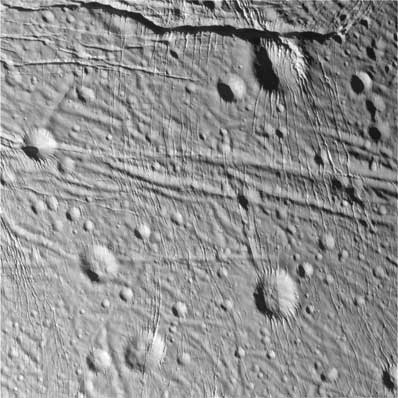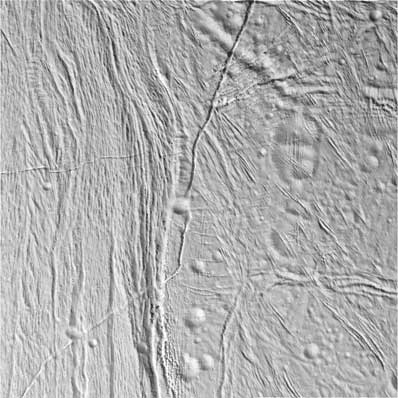
Spaceflight Now +

|

|

|

|

Premium video content for our Spaceflight Now Plus subscribers.

Shuttle history: STS-3
 This retrospective remembers the third voyage of space shuttle Columbia. The March 1982 mission served as another developmental test flight for the reusable spacecraft, testing its systems while also conducted a limited science agenda. STS-3 is distinguished by making the first landing at White Sands, New Mexico. This retrospective remembers the third voyage of space shuttle Columbia. The March 1982 mission served as another developmental test flight for the reusable spacecraft, testing its systems while also conducted a limited science agenda. STS-3 is distinguished by making the first landing at White Sands, New Mexico.
 Browse video collection Browse video collection

Planet discovery
 Astronomers announce major findings about planets outside our solar system at this Spitzer Space Telescope science news conference on March 22 from NASA Headquarters. (21min 22sec file) Astronomers announce major findings about planets outside our solar system at this Spitzer Space Telescope science news conference on March 22 from NASA Headquarters. (21min 22sec file)

 Play video: Play video:
Dial-up | Broadband

 Download audio: Download audio:
For iPod

Story of NASA-Ames
 The storied history and achievements of NASA's Ames Research Center are remembered in this narrated movie about the California facility. (23min 40sec file) The storied history and achievements of NASA's Ames Research Center are remembered in this narrated movie about the California facility. (23min 40sec file)
 Play video Play video

Atlas 5 soars
 This sequence of images from a sound-activated still camera fitted with a fisheye lens was stitched together to provide a unique perspective of the Lockheed Martin Atlas 5 rocket blasting off from Complex 41 with the Inmarsat spacecraft. This sequence of images from a sound-activated still camera fitted with a fisheye lens was stitched together to provide a unique perspective of the Lockheed Martin Atlas 5 rocket blasting off from Complex 41 with the Inmarsat spacecraft.
 Play video Play video

Delta 4 pad camera 1
 The first Boeing Delta 4-Heavy rocket ignites and lifts off from pad 37B at Cape Canaveral Air Force Station on its demonstration test flight as seen through this sequence of images from a sound-activated still camera. The first Boeing Delta 4-Heavy rocket ignites and lifts off from pad 37B at Cape Canaveral Air Force Station on its demonstration test flight as seen through this sequence of images from a sound-activated still camera.
 Play video Play video

Delta 4 pad camera 2
 A second sound-activated still camera placed at pad 37B by Spaceflight Now photographer Ben Cooper provides a different view of the Delta 4-Heavy rocket launch. A second sound-activated still camera placed at pad 37B by Spaceflight Now photographer Ben Cooper provides a different view of the Delta 4-Heavy rocket launch.
 Play video Play video

 Become a subscriber Become a subscriber
 More video More video

|

|

|

|
|

|

Sliced-up craters on Saturn's icy moon Enceladus
CASSINI PHOTO RELEASE
Posted: March 24, 2005

Credit: NASA/JPL/Space Science Institute
Download larger image version here
|
During its very close flyby of Enceladus on March 9, Cassini took high resolution images of the icy moon that are helping scientists interpret the complex topography of this intriguing little world.
This scene is an icy landscape that has been scored by tectonic forces. Many of the craters in this terrain have been heavily modified, such as the 10-kilometer-wide (6-mile-wide) crater near the upper right that has prominent north-south fracturing along its northeastern slope.
The image has been rotated so that north on Enceladus is up.
The image was taken in visible light with the narrow angle camera from a distance of about 11,900 kilometers (7,400 miles) from Enceladus and at a Sun-Enceladus-spacecraft, or phase, angle of 44 degrees. Pixel scale in the image is 70 meters (230 feet) per pixel.

Credit: NASA/JPL/Space Science Institute
Download larger image version here
|
This view of Saturn's moon Enceladus shows an area that has undergone a very intriguing -- and in places puzzling -- sequence of events. The craters here are subdued, as seen elsewhere on Enceladus, and most, but not all, are older than the fractures. Fracturing has occurred at a wide variety of scales, from the wide rift running through the center of the image to much narrower sets of shorter fractures that crosscut the craters (and each other) to the left.
The image has been rotated so that north on Enceladus is up.
This region is a transition from cratered to wrinkled terrain. Westward (left) of the central rift that divides the two regions are relatively parallel grooves and ridges that are reminiscent of terrain on Jupiter's large moon Ganymede. Very few craters are seen in this area of Enceladus. Eastward (right) of the large rift the terrain becomes more cratered, although the craters are quite degraded (meaning soft and shallow in appearance).
A prominent fracture runs north-south to the center of the image, then turns sharply to the southwest, cutting across cratered terrain, the large rift, and the grooved terrain. This behavior signifies that it is one of the youngest features in this image.
The image was taken in visible light with the narrow angle camera from a distance of about 14,000 kilometers (8,800 miles) and from Enceladus and at a Sun-Enceladus-spacecraft, or phase, angle of 44 degrees. Pixel scale in the image is about 85 meters (280 feet) per pixel.

Credit: NASA/JPL/Space Science Institute
Download larger image version here
|
This image of Saturn's moon Enceladus shows a region of craters softened by time and torn apart by tectonic stresses. Fractures 100 to 400 meters (330 to 1,300 feet) in width crosscut the terrain: One set trends northeast-southwest and another trends northwest-southeast. North is up. A region of "grooved terrain" is visible on the left. A broad canyon, its floor partly concealed by shadow, is notable on the right.
The image was taken in visible light with Cassini's narrow-angle camera from a distance of about 25,700 kilometers (16,000 miles, red-colored image) and from Enceladus and at a Sun-Enceladus-spacecraft, or phase, angle of 46 degrees. Pixel scale is 150 meters (490 feet) per pixel. The image has been contrast-enhanced to aid visibility.
The Cassini-Huygens mission is a cooperative project of NASA, the European Space Agency and the Italian Space Agency. The Jet Propulsion Laboratory, a division of the California Institute of Technology in Pasadena, manages the mission for NASA's Science Mission Directorate, Washington, D.C. The Cassini orbiter was designed, developed and assembled at JPL. The magnetometer team is based at Imperial College in London, working with team members from the United States and Germany.
|

|

|

|

|



